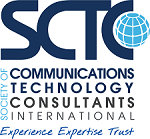Local number portability (LNP) has been around since the mid-nineties and is now the mainstay of both wireless and wireline providers. Direct Inward Dialing numbers (DID) are now “owned” by the end user, so to speak. The end user may be an individual with one number or an enterprise customer with hundreds or thousands of numbers necessary for their company telecommunication needs. The end user can keep their number and change providers as much as they wish.
The wireless providers easily change their customers number when they change providers in near real-time with little effort on the part of the end user. Due to a relatively high churn rate, and a good user experience, the wireless providers have devised a seamless process to move numbers between providers, allowing the customer to keep their number as they move from the old carrier to their new vendor. The carriers do these number moves many times a day with little contention.
However, land line providers have a very different approach to number portability. And the larger the customer, the more time consuming transferring numbers can become. Carriers are very reluctant to give up these numbers as they are losing revenue each time it occurs, and these ports are normally larger blocks .
Land line providers' processes seem, at times, intentionally made difficult to deter changing carriers. A wireless provider can port a number in a few minutes, and the traditional land-line carriers typically take weeks to complete a port. And this process can drag out if any of the provided information is incorrect. And yes, resubmitting can mean you’re now starting over again and not picking up where you left off.
What is Required to Port Numbers (NANP-Domestic Porting)
We will concentrate on a mid-size enterprise company for these examples—say, 1200 DIDs to port. But the requirements apply to one or 10,000 numbers being ported.
- Draft and finalize a Letter of Authorization (LOA) - This document must be signed by the company's authorized porting authorit y employees. The porting authority names will be on file with the current (losing) carrier. The LOA will typically have the company's billing address, the account number, and a list of all the DIDs that the company wishes to port to a new carrier, plus the date and time the company wants to port these numbers.
- Send the LOA to the new (awarded) carrier. They are the ones that submit the LOA to the losing carrier on behalf of the enterprise. This starts the porting process.
Once those two steps are followed, it's a matter of “wait and see.” Typically, if there is an error, the enterprise will be notified by the awarded carrier within a week. The losing carrier does not provide exactly what is wrong but will give you general information such as “address error.” This can be a missing suite number or labeling "Street" as “St.” There can be many missteps along the way that the losing carrier may take use that will slow the process. This is also carrier-dependent as some carriers are more reasonable than others, but at the end of the day, the information does need to be correct to avoid fraud.
Pitfalls You Can Avoid Minimizing the Pain of a Number Port
I will attempt to provide you with the most common errors that customers unknowingly encounter when they submit an LOA for porting.
- You may only have ONE port in progress at any time. If you have a pending port for, say, three DIDs for a branch office, you cannot submit another LOA for a second port until the pending port is complete.
- Provide a Customer Service Record (CSR) to the awarded carrier. A CSR has information pertaining to the customers business account for the numbers being ported and will also help you verify the billing address. The billing address on the LOA you provide MUST match completely to the billing address on file with the losing carrier. Your current carrier can provide this to you.
- Your carrier may not be the owner of the DID you wish to port. Carriers may not have DIDs you want; thus, they may obtain them from another carrier. This does not mean that the carrier now has them in their inventory, it means they have “rented” it from another carrier to provide to their customer. Often this comes back as a rejection stating that your carrier is not the owner of this number. The CSR should minimize this issue as it’s documented proof that this number is in your inventory.
- If you submit even one DID to port that is not yours—the entire LOA request gets rejected. Often a number can be lost, or maybe it was a spare that you surrendered and did not realize. Remove it from the list and resubmit, or you will slow the entire process down. Fix it later if you truly need that DID.
- Your billing number is part of a ring group. If your billing, or main number is provisioned as part of a ring group, the entire block of DIDs cannot be ported. This can happen by mistake and may take time to correct. If it is truly part of a ring group, then ALL the DIDs must move, not part of them.
- Once a port is deemed a responsible organization (RESPORG) with the winning carrier, it is best not to cancel the port. Although a port can be cancelled—or the port date changed—the closer to the date of the port, the more of a risk you may encounter. If you need to cancel a port, try to do this sooner rather than later. A week usually is a safe bet to move or cancel a port. You want to avoid this nightmare scenario: T port was cancelled a day prior to execution by the enterprise customer. But the losing carrier already changed the routing information and removed these numbers from their network provisioning. Consequently, the day after the changeover to the winning carrier, all the calls to that specific port fail, and the customer is out of service until the provisioning can be restored. This can take hours, or days. There may also be charges for this action.
I hope these best practices will help users to navigate the porting process with the carriers. When you encounter problems, persistence is key to resolving it. And don’t be surprised if your current carrier (losing carrier) cannot transfer you to the porting department. This is not how most carriers interface when they are losing an account. Its best to work with your account rep to resolve issues along the way. The awarded carrier may be able to help, but ultimately, it is the responsibility of you, the customer, to correct this problem to move forward with the port.
Coming next time: I'll talk about international porting and number assignment.
Enjoy incredible speakers, insightful educational sessions, and plenty of networking opportunities for consultants at the SCTC annual conference, Oct. 23-26 in Dallas, TX. The conference is open to everyone.











